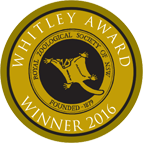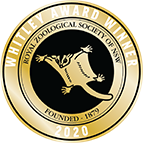Conservation Action by NSWBA
There is a pressing need to know much more about native birds occurring in NSW and the ACT in terms of such basic questions as where are they to be found now and what are their present needs. The work of the NSW Bird Atlassers Inc. is of prime importance here. Where conservation issues involve bird habitat, the NSWBA undertakes a role lobbying the relevant authorities be it a local council, state or federal governments or industry, mostly by presenting submissions, writing letters on the subject or by joining the push, with other organisations, for a balanced and considered approach to the issue.
Key recent (2020) NSWBA submissions made concern the Private Native Forestry Review (covering Northern NSW, Southern NSW, the States River Red Gum Forests and Cypress and Western Hardwood Forests); Bowdens Silver Project near Mudgee, NSW covering almost 200,000 hectares (this is the largest, undeveloped silver project in Australia and one of the largest globally); the Narrabri Gas Project (now approved by State & Federal Governments, this project extends over 95,000 hectares and will negatively impact sizeable areas of 3 State Forests); the Macquarie-Castlereagh Water Resources Plan (which proposes significant change to the existing plan and potentially further threatens the internationally significant Macquarie Marshes); and the Macquarie River Re-regulating Storage Project (which was primarily focussed on delivering resilient water resources for all water users in the Macquarie Valley and also has the potential to have an impact on the Macquarie Marshes).
Leaving aside the effects of the recent bushfires that devastated over 6% of the NSW forests and the extended drought which affected much of the State, our environmental management record overall, i.e. since European settlement, has been poor. The combined effects of our actions have resulted in the habitat of many birds (and other native creatures) being so seriously affected now that many species may not survive over the long term: their outlook is bleak. Climate change is an added, serious and all pervasive threat.
NSWBA findings to date show that, most native birds are now in worse circumstances when compared to their situation in the 1980s. Of the 573 species known to have existed in NSW, the ACT and the western Tasman Sea, more than 50% of the land birds are now in serious decline. The populations of many seabirds and shorebirds are also undergoing declines.
It is estimated that 2 in 5 native birds are now under threat through habitat loss caused by the actions of people. Examples include –
Should any member become aware of an issue proposing to threaten an ecosystem of importance to existing bird welfare, they can email details to our Conservation Officer Jane Paul conservation@nswbirdatlassers.org.au. You may even wish to offer further input or support.










